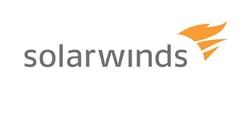SaaS Platforms: Are They a Security Risk?

Every day, cyberhackers are finding new ways to infiltrate your devices and get control of valuable data. Within the last two years, cyberattacks have been ramping up their attacks on popular SaaS platforms – ones that most businesses use every day.
Since reports of compromised SaaS security have been increasing lately, we’d like to take a closer look at SaaS software, the benefits and risks they present and what precautions to take when using these platforms.
What is SaaS?
SaaS is an acronym for software as a service. Essentially, SaaS is a software delivery process where data can be easily accessed from any device existing on any geographical location - provided the device is connected to the internet.
SaaS applications are subscription-based, which means they host and manage the platform’s servers, databases and other assets. Once a company is subscribed, they get access to sophisticated applications provided to them for their service delivery.
SaaS Platforms
SaaS is not a single piece of software. This term is an umbrella for cloud-based applications that can be accessed anywhere through an internet browser or app.
Without even knowing it, you’re most likely very familiar with some of the biggest SaaS platforms on the market:
- Microsoft’s Office 365: In Office 365, you can chat with team members, send emails, and create documents, spreadsheets, presentations and more. Any team member with credentials can create, edit and share content across any device in real-time.
- Dropbox: Large documents, pictures and videos can easily be stored and shared between team members on Dropbox.
- Google Drive: Google Drive offers several applications for file storage and sending, customized email, video/chat features and shareable calendars.
- DocuSign: DocuSign efficiently manages online contracts and verifies e-signed documents, making signing and sharing contracts more efficient.
- Slack: This platform allows team members to chat in real-time easily, call one another, and share documents, links and more instantly.
Benefits of SaaS
SaaS platforms and applications offer many advantages, especially to businesses that have been forced to go remote during the COVID-19 pandemic. And often, the benefits outweigh the potential security risks, including:
- Increased accessibility, which allows any device connected to the internet easy access to shared data.
- Automated updates from the platform keep your data as safe as possible from potential data leaks. Plus, the automatic feature saves you time from updating applications yourself.
- Reliability, keeping your documents safe in an external cloud and fail-safes against site downtime.
- Enhanced flexibility, allowing customers to personalize their interface to fit their business’ unique needs.
Potential SaaS Security Risks
The majority of highly popular SaaS platforms are products of reputable companies with focuses on security. But, as we’ve discussed before, even the strongest online protections are not infallible. A recent Sophos study reported that 70% of companies who store their information on cloud-based platforms had suffered a public cloud security incident within the last year.
While the majority of dangers that come with SaaS programs are related to theft or potential theft of data from the cloud through malicious hacking, there’s still a variety of risks outside of digital criminals. These include:
- Incomplete control over who can access sensitive data, especially if many team members share cloud credentials.
- Inability to monitor the movement of data to and from the cloud application to specific devices.
- Inadequate managing of documents or files by untrained employees, leading to potential security issues or lost/deleted documents.
- Unregulated data compliances or updates to the SaaS application.
How to Protect Your Company from SaaS Security Threats
With SaaS being a vital part of many everyday business operations, keeping these platforms as protected as possible is essential.
Your first step is to ensure that your updates are indeed performed automatically. Next, focus on rolling out password managers for your teams (and mandating strong passwords for credentials.) Your company also can’t afford to skip out on employee training for online safety. Human error is a significant cause of data breaches – if your employees know how to protect themselves online and the signs of a potential attack, you’re less likely to be hit by cybercriminals.
Outside of this? We recommend investing in a managed services provider (MSP.) An MSP is a robust layer of protection against a digital disaster. They’re there to not only keep your company’s data safe, but to aid in any additional technology endeavors. This could include updating your tech infrastructure, transitioning to cloud-based systems or even just providing everyday support.
At Switchfast Technologies, we are always ready to help your company with your IT needs. If you have any concerns about your SaaS safety or online protections in general, contact us today for more information.










